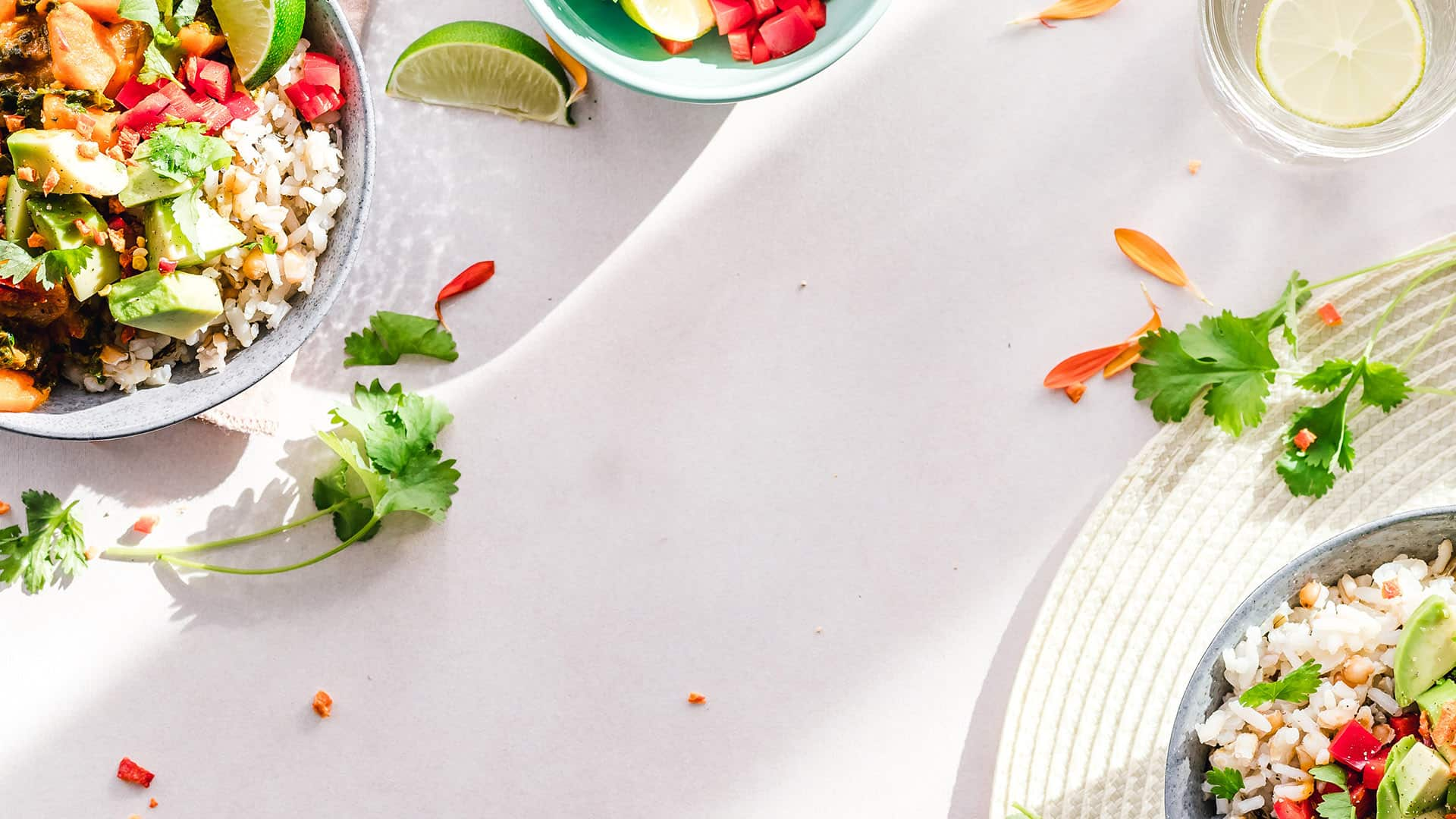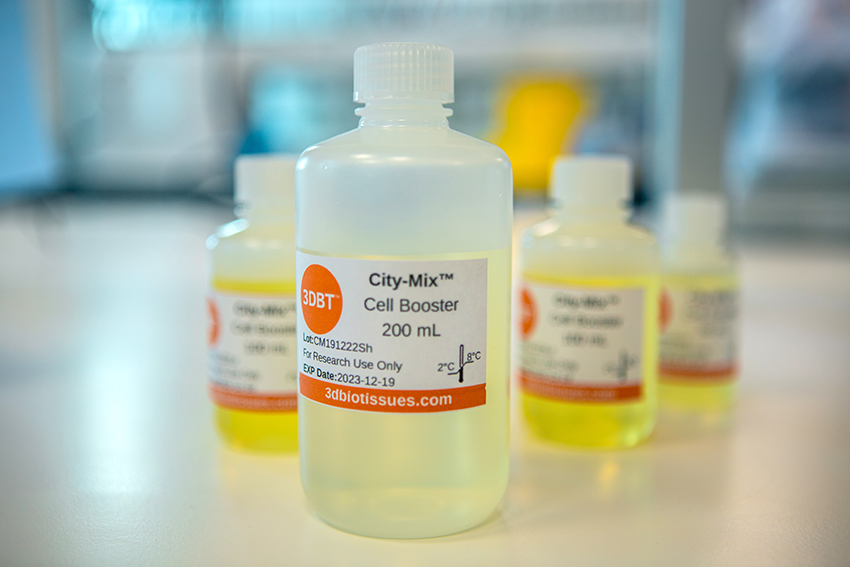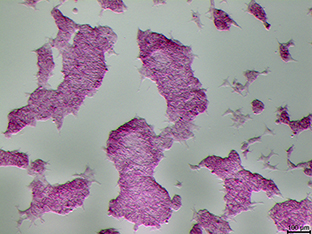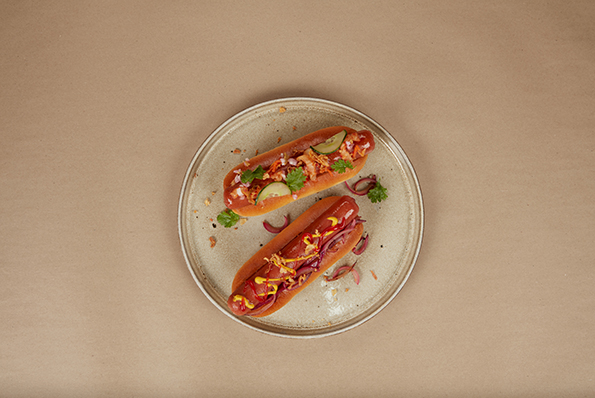

Deep Dive: Double trouble
The success of cultivated meat hinges on achieving two primary challenges: improving cell line performance and advancing growth media composition. Louise Davis meets the biotech experts striving to overcome the technical and manufacturing obstacles to reach these goals
When selecting cell lines for cultivated meat production, there are a whole range of characteristics that must be taken into consideration. According to Cai Linton, the Co-Founder & CEO of Multus Biotechnology, the shortlist includes, “Stability during production, functional potential (differentiation, sensory properties, protein production), growth potential (speed/density), batch-to-batch consistency, and adaptation to production environments (e.g. microcarriers, suspension-adaptation).”

Stepping up to tick off some of those requirements are stem cells. “Stem cells have high functional potential – they can differentiate into multiple cell types and there is therefore finer control possible over desirable cell behavior,” Linton explains. “Induced stem cells can be isolated easily and banked for batch-to-batch consistency. And stem cells typically have greater potential for self-renewal and are therefore more stable over long periods of cultivation.”
On that last point, the concept of ‘immortalized’ cell lines comes into play. “These are cells that have adapted – naturally or through genetic editing – to be able to grow consistently over long periods of time,” Linton explains. “Most cells in our body have a limited lifespan – called the ‘Hayflick Limit’ – which dictates how many doublings the cells can go through before they stop growing. Immortalized cell lines overcome the Hayflick Limit and can therefore be banked for batch-to-batch consistency, and grow stably during production.”
When it comes to growth media for those cell lines and how this impacts the nutritional profile of the final cultivated meat product, Linton explains that growth media directs cell behavior, providing the nutrients and signaling stimulus to affect gene expression. “The nutritional profile of cultivated meat is determined by the genetics of the cells and the content of growth media (e.g. amino acids, vitamins, minerals, inorganic salts, sugars, lipids). By measuring the nutritional profile (output) of cells in relation to their genetics, growth media and growth environment (inputs), we can affect more desirable nutritional profile by altering the growth media.
“Multus is investing in increasing the diversity of nutritional inputs to growth media, such as through our work on plant-derived extracts, to increase the productivity, functionality, sensory properties, and nutrition resulting from cell growth.”
Linton describes Multus as being on a mission to make cultivated meat the affordable and sustainable choice for everyone, globally. “And we’re seeking to be the partner of choice in solving breakthrough growth media R&D challenges, and for sourcing critical growth media solutions at commercial scale,” he adds.
The industry is incredibly early now, and we believe speed is more important than protecting technologies that are immature and fluid
Partnerships are, naturally, a critical part of progress but it seems unusual in a sector where players are largely differentiated by IP that Multus is adopting a highly open and collaborative stance. It recently worked with cultivated meat manufacturing partner, Extracellular, to open the first license-free cultivated meat cell bank, which provides cells that are up to 90% cheaper than other providers and free from licensing restrictions. How does Linton feel that this approach – similar, in a way, to open-source software – could generate success? “We have our core competencies where we can add unique value, which we think are best leveraged by working with other companies and their core competencies – be it enabling companies such as Extracellular, raw material suppliers and production partners or through other partnerships we have with cultivated meat producers,” he details. And he isn’t worried about any potential risks to such an open approach. “The industry is incredibly early now, and we believe speed is more important than protecting technologies that are immature and fluid,” he says.

In terms of what’s next for Multus, Linton says there are a few ongoing projects across its focus on novel ingredient discovery, advanced formulation design and food-safe manufacturing. “We’re also building a first-of-its-kind facility, to bring food and biopharmaceutical manufacturing together, to make food-safe growth media that’s affordable and scalable,” he reveals. “And we have a new class of ingredients to feed cells that we’re testing now with close partners that will change the way in which growth media is designed and sourced for cultivated meat production. Plus, we’re developing several new formulations for our partners to quickly solve breakthrough growth media R&D challenges with a platform for media development that will unlock the opportunity in cultivated meat by piercing through the complexity of biology with advanced lab automation and AI.”
Lines of duty
Putting biology aside, “cultivated meat production is foremost an engineering process”, according to Dr Ricardo Gouveia, CSO & Co-founder of 3D Bio-Tissues (3DBT), which earlier in the year announced a cultivated pork steak, so it needs to be “highly efficient, reliable, and reproducible to be cost-effective and fit within strict regulatory parameters”.
“As such, when selecting cell lines, you need to consider their stability, potency, differentiation capacity, and robustness to the multiple bioprocessing steps they will be subjected to,” Gouveia suggests. “Moreover, it is important that meat made from these cells actually contains the relevant structural, nutritional, and organoleptic properties the typical meat consumer knows and loves.”
Gouveia cites improvements in growth media as playing a key role in achieving those qualities. “Growth media optimization is hugely relevant in the cultivated meat space, where high production efficiency and yield coupled with very low production costs are paramount to the success of the entire concept,” he says. “We at 3D Bio-Tissues are very lucky by having developed what we believe to be a key enabler of cultivated meat production – the City-Mix cell boosters, a range of food-grade, chemically defined media supplements proven to enhance cell growth and tissue production yields in a wide variety of cell types and culture conditions. Unlike other solutions, it’s very scalable, and easy to transport and store over long periods without the need for a cold chain.”
It is important that meat made from these cells actually contains the relevant structural, nutritional, and organoleptic properties the typical meat consumer knows and loves
When asked about sustainable and cost-effective sources of nutrients in growth media, Gouveia acknowledges that although it is exciting to see an ever-increasing number of sustainable sources and suppliers for nutrients and growth factors in the cultivated meat space, 3D Bio-Tissues is all about efficiency. “Making more with less – or perhaps more adequately, needing less to make what’s needed.

“We think this perspective is crucial for keeping the economic, ecological, and social costs associated with cultivated meat not only achievable but also below those of traditional meat. That is why we believe City-Mix to be such an important product in this space: not only is it comprised of ultra-stable macromolecules that can be
easily produced at the kiloton scale from agro-industrial byproducts and thus support a circular bio-economy, but it also enables essential media ingredients such as hormones, growth factors, vitamins, and protein carriers to be drastically reduced by up to 75%!”
Ultimately, he says this means repurposing raw materials to obtain greater yields, at lower production costs, using fewer resources. “In other words, we allow sustainable, cost-effective bio-manufacture to become a reality.”
A potent blend
Somebody else striving to achieve this vision is Dr Ramiro Alberio, Founder of PluriCells and Professor at the University of Nottingham, UK, whose expertise lies in stem cell and developmental biology. “Different cell types have been used for the cultivated meat process,” he begins. “Broadly, they can be classified in two groups based on their sourcing: tissue biopsies from donor animals from which you can extract adult stem cells (muscle stem cells, fibroblasts, and mesenchymal cells), and pluripotent stem cells, which can be obtained from early pre-implantation embryos or via reprogramming somatic cells (iPSCs).
In both cases, some key features for the selection of suitable cell lines include long-term proliferation capacity, efficient differentiation, genetic stability, and rapid proliferation (doubling time <16 hours). Embryonic stem cell lines offered by PluriCells fulfil all of these criteria.”
Alberio believes that pluripotent stem cells can be more complex to work with but he says they have the flexibility of being able to differentiate into any type of bodily cell as well as being effectively immortal”.
So, how have stem cell technologies contributed to the development of improved cell lines for cultivated meat? “Embryonic stem cells can now be generated from cattle, pig, and sheep embryos at high efficiency,” Alberio says. “These cells proliferate long term, are grown in chemically defined media, and are a source of stable cells for differentiation into desired cell types (such as muscle and fat). Because these cells are pluripotent, they are very versatile and can be directed toward these cell types using a variety of methods. Since these cells are virtually immortal, they offer a consistent starting material for the cultured meat manufacturing process.”
Alberio also describes how the optimization of growth media composition has contributed to the efficiency and scalability of cultivated meat production. “For example, in the case of our cell lines, a newly developed medium yields four times higher cell concentrations of cells compared with the original medium. This is due mostly to the reduced cell death upon passaging, which was achieved through the optimization of essential factors required for cell survival.”
According to Alberio, the response to the launch of its cell lines has been “very positive”. Many cultivated meat companies have typically used primary cells and immortalized somatic cells for their processes. “Our lines offer something different and more robust for their processes of manufacture, and this has generated considerable demand for the lines.”

Hinting at more news to come, Alberio says he and his team are working on a new product that they expect to launch in the next few months. “This new medium will considerably reduce the cost and media changes, while increasing cell yield after each passage. We think it will have a massive impact in persuading companies to adopt these technologies in their pipelines because it will be addressing a key issue of costs associated with cell expansion.”
Regarding the bigger picture in terms of getting cultivated meat products onto plates, what role does Alberio think firms such as his can play? “PluriCells technology is embedded within our Food Systems Institute, dedicated to developing platforms for alternative protein supply. We are working with partners in the plant and fermentation areas to create novel food products that combine the use of animal cells, too, with the aim of creating products of high nutritional value. PluriCells offers a robust animal cell platform essential for driving innovation in the creation of sustainable meat products. We also collaborate with other academic institutions to design novel bioreactor processes to increase efficiency of cell expansion and differentiation. Finally, we have collaborations with industry partners developing novel media, which reduce cost and increase cell survival, yielding increased biomass in less time.”
The Ivy league
Alberio himself is also proving an enabling force for positive momentum, by working as an advisor to another company in this sphere, Ivy Farm Technologies (where ‘Ivy’ stands for ‘in vitro’). Rowan Rimington is the company’s Head of Cell Biology. Similar to Alberio, he believes that partnerships and knowledge are a vital part of developing the cultivated meat sector. “At Ivy Farm, we’ve identified three key areas where they will be integral to scaling cultivated meat,” says Rimington. “The first lies in food-grade inputs expertise – we’re working with (and seeking more) partners to help us develop high-volume, cost-efficient, food-grade media that we can use to grow our cells at scale. The second area lies in fermentation – we’re looking for companies who can help us to expand and scale our fermentation capacity and technology. These two areas will tackle the main barriers to getting cultivated meat to market – the costs involved in its production and scaling.
Although in its infancy, the cultivated meat R&D value chain has established itself as a highly unique proposition. In some respects, it is a square peg in a round hole that has immense potential value to society

“The third area in which we’re seeking partnerships is with companies that are experts in final product development, branding and distribution. Working with established brands is where we expect to see cultivated meat gain credibility, adoption, and confidence among consumers to really speed up.”
A large part of credibility lies in offering the best-quality products. And when it comes to determining the best cell lines, Rimington says this process can be broken down into four phases: ensuring the cell types are ethically sourced and safe to enter the food chain; selecting the best starting cells (he says “a purist’s view would be that cultivated meat should be produced using muscle and fat cells”); identifying and training the best performers; and ensuring they are stable and certified. “Once required attributes and KPIs are demonstrated at bench/pilot scale, a thorough cell banking event should be executed to preserve the cells, produce sufficient working stocks for cell mass expansion, and evidence cell stability throughout the manufacturing window,” he explains. “Further specific testing is also required for sterility, traceability and any potential contaminants – as safety is paramount.”
When asked how stem cell technologies have contributed to the development of improved cell lines for cultivated meat, Rimington says, “The jury remains out on the best starting cell source for cultivated meat. It is sensible for the success of our field that across the wider ecosystem, companies are taking aligned (high-scale, low-cost) but contrasting approaches (primary or stem cells). Complemented by B2B cell line development specialists, primarily focused on stem cells, only time will give us the answer. Although in its infancy, the cultivated meat R&D value chain has established itself as a highly unique proposition. In some respects, it is a square peg in a round hole that has immense potential value to society. Our role is to find out how we can make the square fit by chipping away until only the best technology remains.”
Rimington emphasizes that “best” must also mean “ethical”, adding that, “Regardless of the starting material, our industry must lean into the ethical considerations encountered when sourcing originating samples. Here, we are fortunate to be able to apply the high-quality standards and expertise from aligned fields such as bio-veterinary and stem cell research. This has allowed a conscientious approach from the start, minimizing any negative impact on animal welfare. One major advantage of cultivated meat is in fact its potential impact on animal welfare through reducing the need for intensive farming. With one sample, one time, infinite meat may be produced to satisfy growing global demand.”
Ivy Farm’s business model has three key strands: licensing its technology to other businesses; selling muscle and fat as raw ingredients; and then selling cultivated meat to manufacturers for processing into final products. To achieve these ambitious aims, Rimington says the company needs to have the right cells that can grow consistently at scale, without the need for the high-cost elements of the media, such as certain growth factors. “We have worked hard at optimizing our media to reduce cost, with further reductions underway.
“However, we also need access to abundant and cost-effective food-grade nutrient compounds to feed our cells. This means building a new supply chain, and for this we are looking to work with partners. We know what to feed our cells, but it’s the access to these components that is vital.”
Rimington’s ultimate vision is to “sell products to food manufacturers, such as Heck, to create hybrid end products – a blend of cultivated meat and other ingredients such as plant-based protein and spices”. They will then be packaged to sell to consumers via grocery stores, restaurants, and other retailers. He also flags up that another route to market would be to sell cultivated meat to manufacturers that are looking to substitute out some of their traditional meat in products, creating a more sustainable ‘blend’. “Although this will be unsuitable for vegetarians and vegans, it can be an effective way to lower meat consumption for those reluctant reducers, without compromising on the sensory quality of eating meat. As cultivated meat is the same as meat, only made via a different process, the nutrition and taste of this type of hybrid product will be uncompromised, therefore with a strong chance of appealing to even the most ardent meat-eaters.”
Making a Vow
Hoping that his soon-to-be-launched (in Singapore, rather inevitably) cultivated meat products have sufficient consumer appeal is Dr James Ryall, CSO at Vow, the firm perhaps known best for its “mammoth meatball” announcement earlier this year. Producing a final cultivated meat product (whether mammoth, kangaroo, or any of the other ‘exotic’ meats Vow has been working on) is no mean feat and along the path to commercialization, Ryall says he’s established several essential characteristics required when selecting cell lines for cultivated meat production. “The cell lines must be capable of serum-free growth (primary animal component free), capable of indefinite divisions (immortal), capable of suspension growth (growing cells in a volume will always outperform growing cells on a surface), and they must possess genetic stability (ideally, the phenotype should remain constant as rapid mutations impact manufacturing, flavor/texture/nutrition and may introduce new allergens).”

Developing cell lines with those attributes has been made possible by advances in areas other than food. “Cultivated meat owes its existence to the advances made in stem cell biology and regenerative medicine,” Ryall states. “We’re essentially building upon the remarkable foundations laid by these fields. It’s a symbiotic relationship, as we hope the cultivated meat industry can, in turn, contribute to the progress of stem cell and regenerative medicine research.”
Citing specific examples of contributions from stem cell technologies to cultivated meat, Ryall says, “Stem cell research has developed advanced techniques for the isolation and purification of specific cell types. These strategies are invaluable in obtaining high-quality starting materials for cultivated meat production.
“Animal-free media design is another contribution,” he continues. “Stem cell technologies have been at the forefront of designing animal-free growth media, which is essential for the sustainable production of cultivated meat.”
He also cites bioreactor design as a significant contribution, explaining that those bioreactors originally designed for vaccine production have found new applications in cultured meat. “Stem cell research has greatly informed the optimization of design and operation, enabling efficient and scalable cell cultivation for meat production,” he notes.
Ryall believes the optimization of growth media composition has played a pivotal role in enhancing the efficiency and scalability of cultivated meat production. “One of the primary challenges in this field has been to achieve higher cell densities in culture,” he says. “This contrasts with other biotechnology processes, such as vaccine production, where the focus is often on the production of vaccine rather than total cell mass. In the case of cultivated meat, the key objective is to maximize cell density while simultaneously minimizing the cost of the growth media. Achieving this delicate balance is critical for cost-effective and sustainable meat production.”

So, what are some sustainable and cost-effective sources of nutrients in growth media for cultivated meat? “This is a great question, and there is so much room for growth and innovation in this space!” Ryall believes. “We’ve already seen multiple companies producing growth factors at a scale and cost previously thought unattainable (so, the cultured meat industry has already had a broader impact on the cell biology field by massively reducing the cost of growth factors). As we look toward the future, we can also anticipate the emergence of new partnerships and collaborations with companies specializing in the production of food-grade amino acids and glucose.”
Overall, Ryall is optimistic that regulatory challenges surrounding the use of novel cell lines and growth media in cultivated meat will be overcome, particularly as additional jurisdictions follow Singapore and the USA and start to open for business. “The biggest challenge in most jurisdictions is that no clear pipeline exists today for a cultured meat product. The entire industry is working closely with regulators around the world to establish these benchmarks. Ultimately, if it is not safe, it is not food,” Ryall observes. “In the realm of growth media, close collaboration with food safety regulators and advisors is essential. Companies should carefully assess the ingredients in their media formulations to meet safety and quality standards while understanding their contributions and associated risks. These collaborative efforts with regulators, experts, and advisors are fundamental for cultivating trust, adhering to best practices, and driving innovation in the cultivated meat industry, ultimately paving the way for a sustainable future of food production.”
If you have any questions or would like to get in touch with us, please email info@futureofproteinproduction.com







